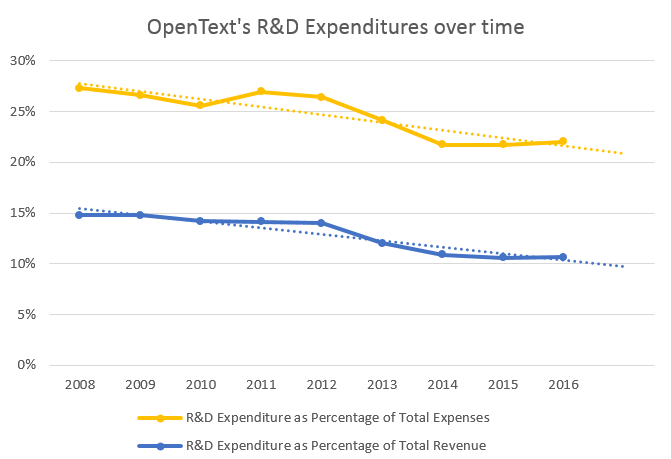With the recent acquisition announcement of Documentum by OpenText, many customers are considering alternative platforms to drive their business in the future.
An analysis of the acquisition and future direction of the Documentum product leaves many questions about its growth. While this change of ownership doesn’t signal the immediate end of life and support for the platform, OpenText has not historically invested in their over 23 acquisitions since 2008. With some down time before an announcement of regulatory approval it could easily take 1-2 years to confirm the investment in innovation. Perficient agrees with Gartner’s analysis of the acquisition announcement:
“There is a risk of slowed technology innovation, market confusion and strained support due to OpenText’s many acquisitions and resulting product overlap.”
Even before this OpenText acquisition announcement Documentum customers faced challenges handling new modern requirements. Lack of new features for users, an increasingly complex infrastructure, rare performance optimizations and older security/encryption features leaves the current-state platform wanting in comparison to emerging platforms. Additionally, the platform is complex to upgrade, has overly complex BPM compared with newer technologies and in turn lacks business agility, and is closed/proprietary – creating significant reliance on the vendor or increasingly rare and expensive consultants. In short, many Documentum customers are considering a more modern, and likely less expensive, platform versus betting on a future OpenText investment in the product.
OpenText has significantly reduced its R&D Expenditures (as a percentage of total expenses and revenue) over the last decade which is just further evidence that an investment in the Documentum product is unlikely to occur:

What’s Next After Documentum?
Change of this magnitude is often intimidating – what’s the best way forward? There are multiple transition strategies with the best approach depending on the specific structure of the target implementation. It’s also worth noting that when configuring a new application, other changes can be included that improve on the current application’s features, and there may even be some native features of the new platform that provide efficiencies and improve user satisfaction and adoption rates. From a technical perspective alternative platforms can offer additional or simpler integration methods, and provide an opportunity to redesign a common middle tier layer.
While there are several alternatives to compare, there is enough uncertainty as to Documentum’s fate to warrant investigation into other options. Lack of product innovation has left the offering stagnant to-date, and with the added uncertainty of its roadmap after the OpenText acquisition, innovation and growth is a concern. There is more potential with emerging and innovative alternatives as innovative new features, options for cloud solutions, and extensible, open source platforms give your business a leg up in the future. On the financial front, Documentum solutions often require configuration and customization which drives up costs via use of expensive Documentum experts. Additionally, customers have faced an increase in maintenance costs. It is likely that the total cost of ECM ownership could be reduced while increasing end-user value by making a switch to a newer product.
If you’d like some guidance on migrating to more innovative ECM options, check out our upcoming webinar:
